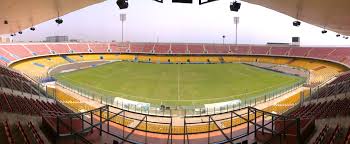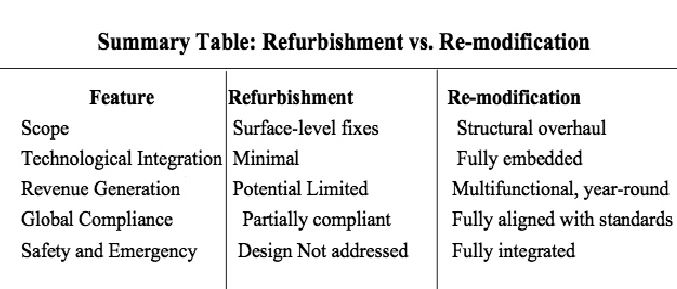
Why Ghana must remodify stadiums for long-term value
President John Dramani Mahama’s recent call for the construction of new sports stadiums across the six newly created regions and other underserved areas is, on the surface, a welcome policy.
It promises inclusivity and the expansion of Ghana’s sports infrastructure footprint. However, as promising as this vision is, it must be pursued with a strategic, value-driven lens — one that prioritises remodification of existing stadiums over cosmetic refurbishments, and insists on infrastructure that aligns with international best practices.
Lessons from the past: Ghost centres and forgotten dreams
Under the previous administration, a collaboration between the National Youth Authority and the National Sports Authority led to the construction of ten sports resource centres in towns such as Ho, Wa, Axim, Dormaa, Dunkwa-on-Offin, Kaneshie, Navrongo, Yendi and Nyinahin. These centres were intended to become hubs for sports development, counselling and entrepreneurship.
Today, however, many of these projects are either underutilised, incomplete, or abandoned altogether. The question remains: What has become of these centres and the promise they held? In their current state, these facilities have neither stimulated local economies nor developed sustainable sporting ecosystems.
If new infrastructure is to be meaningful, we must first conduct a surgical review and overhaul of our existing facilities.
Refurbishment vs Remodification: Business case for transformation
Ghana’s sports infrastructure cannot be globally competitive if we continue to apply surface-level fixes to deeply rooted structural and operational challenges. While refurbishment may offer short-term political wins, remodification is the only viable long-term investment. Here’s why:
1. Outdated structural designs
Most Ghanaian stadiums were built decades ago, based on now-obsolete engineering and architectural standards.
They fall short on basic requirements like emergency exits, roofing, seating layout, and drainage systems. As a 2021 FIFA report put it: “Several stadiums in Africa... require holistic redesigns to align with modern codes.”
2. Non-compliance with international standards
Ghana’s stadiums are not equipped with the facilities required by global sporting bodies such as CAF, FIFA, or the IOC. Key gaps include:
Inaccessible design for persons with disabilities Poor athlete and media zones Substandard medical and anti-doping areas
Weak security infrastructure
CAF's 2023 report is clear: “Facilities that do not meet international regulations are ineligible to host global or continental tournaments.”
3. Technological Obsolescence
Modern stadiums are becoming digital hubs. Ghana’s facilities lag behind in offering:
Smart ticketing systems
High-speed Wi-Fi
LED scoreboards and VAR installations
A 2022 PwC Sports Outlook noted: “Without foundational upgrades, African stadiums will struggle to keep pace with global fan engagement trends.”

4. Sub-par fan experience
Today’s fans expect more than just a seat. Poor visibility, limited food and restroom facilities, uncomfortable seating, and congested walkways hurt the fan experience. A 2022 Deloitte report said: “Modern fans demand a holistic, immersive experience.”
5. Lack of commercial spaces
Globally, stadiums have evolved into year-round commercial assets, offering:
Hotels
Retail outlets
Event spaces
Fitness centres
Ghana’s stadiums are idle for most of the year, unable to monetise beyond match days. A 2023 KPMG advisory warned: “A stadium that cannot operate 365 days a year is a liability.”
6. No alignment with sustainability goals
Modern facilities incorporate green designs such as solar power, water recycling, and eco-friendly materials. Ghanaian stadiums are yet to make such transitions — putting us out of sync with global ESG trends.
7. Poor Emergency and Crowd Management
Many local stadiums lack:
Clearly marked evacuation routes
Fire suppression systems
Real-time crowd monitoring tools
In the age of heightened safety concerns, this is a glaring risk.
8. Limited Revenue Diversification
Remodified stadiums can be reconfigured to host concerts, exhibitions, conferences, and community events — unlocking new revenue streams. As per EY’s 2021 Sports Facilities Report: “Remodification allows for increased monetisation through diverse programming.”
Road ahead: Sustainability, Profitability and Prestige
Ghana has an opportunity to make a bold, forward-thinking investment — not just in sport, but in infrastructure that fuels local economies, creates jobs, and builds national pride. The remodification of our stadiums is not a luxury; it is a strategic necessity.
When done right, it could position Ghana as a preferred destination for continental and global sporting events, while ensuring that the facilities serve communities economically and socially throughout the year.
As the government prepares to add new stadiums, let us not forget to fix what is broken — and transform what we already have into engines of opportunity, not relics of missed potential.
(The writer is a media practitioner and sports marketing official, currently studying Sports Business Management and Policy at Manchester Metropolitan University)